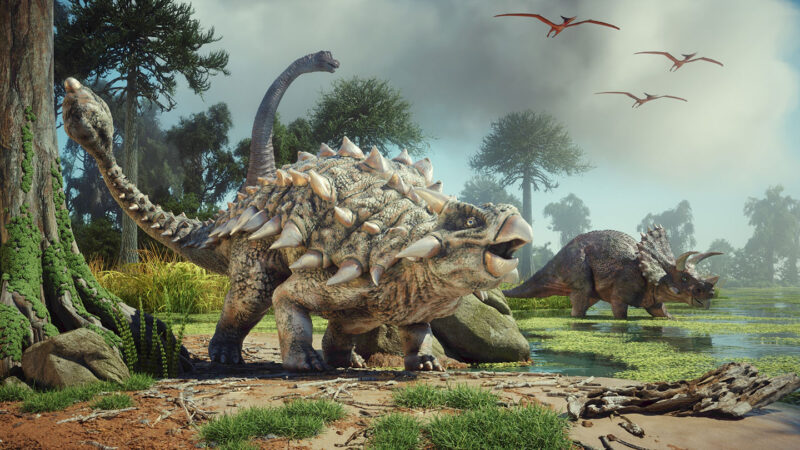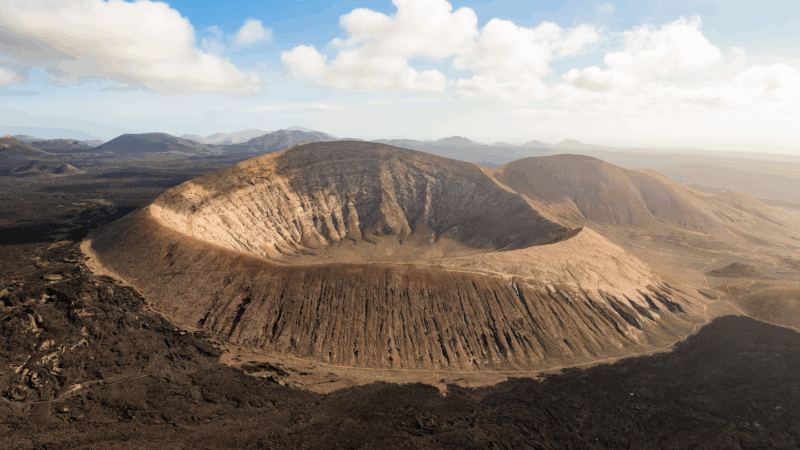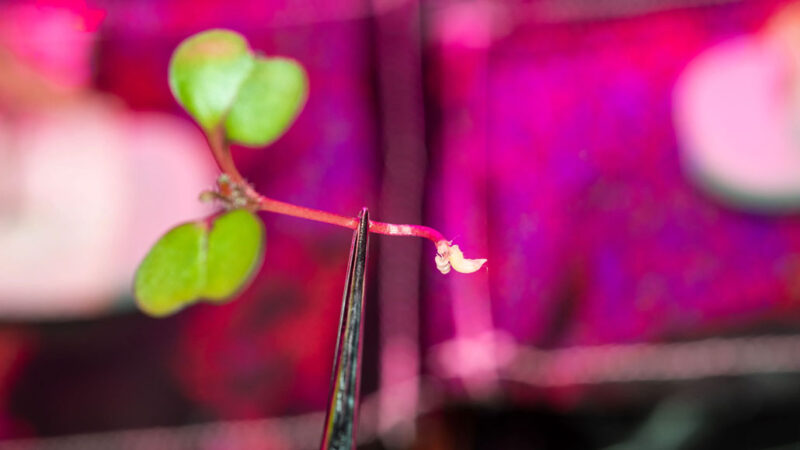Visit your local natural history museum gift shop and you’ll probably find a container of dinosaur toys for sale. Dump out its contents, though, and you’ll likely find some imposters, says Nathan Smith. He should know. He’s director and curator of the Dinosaur Institute in California. It’s part of the Natural History Museum of Los Angeles. Winged pterosaurs are a common fraud. So is the sail-backed carnivore, Dimetrodon.
The word “dinosaur” isn’t a catch-all term for just any scaly, prehistoric giant. “There’s kind of a misconception that any big extinct thing was a dinosaur,” Smith says.
In fact, dinos are a specific group of reptiles. They have been around continuously for more than 200 million years. They include everything that’s descended from the earliest common ancestor of avian (bird) and nonavian dinosaurs, Smith explains.
Nonavian dinosaurs include such iconic beasts as Triceratops and Tyrannosaurus rex. Emerging in the Triassic, nonavian dinosaurs dominated the planet during the Mesozoic Era. This later era — also known as the Age of Dinosaurs — lasted until the close of the Cretaceous Period some 66 million years ago. Scientists suspect that’s when an asteroid wiped out about 80 percent of all animals.
Not all dinosaurs vanished after this impact, though. Some birds survived. They evolved into the more than 11,000 species of dinosaurs that roam Earth today.
Birds are included in the dinosaur family tree. They belong to a group called theropods, which also includes Tyrannosaurus rex. Pterosaurs often get grouped in with dinosaurs because they lived at the same time, but they are not actually dinosaurs.ILLUSTRATION BY STEVE MCCRACKEN
Some reptiles became birds
Birds first arose some 160 million years ago. They descended from small, meat-eating dinosaurs similar to Velociraptor (of Jurassic Park fame).
The Velociraptor made famous by the Jurassic Park movie franchise, a model of which is pictured here at Universal Studies in Hollywood, probably doesn’t accurately depict the species. The filmmakers most likely based the movie version on Deinonychus, a dino twice its size.Emma McIntyre/Getty Images Entertainment
So if birds descended from dinosaurs, does that make them reptiles? Evolutionarily speaking, yes.
Traditionally, animals have been classified based on their physical features alone. Under this system, birds — warm-blooded and covered in feathers — were separated from scaly, cold-blooded reptiles. Today, most researchers instead organize living beings by their evolutionary relationships.
And new findings are offering better insights into the origin of birds. This has allowed researchers to trace bird ancestry back to their ancient dino ancestors.
Some hallmark features of today’s birds — such as feathers — came from nonavian dinosaurs. Meanwhile, certain traits set them apart from other reptiles. Consider the pygostyles (PY-go-stiles). These fused backbones support a bird’s tail feathers.
“Birds are a subgroup of dinosaurs,” says Smith. “All of those are then a subgroup of reptiles. Birds are dinosaurs in the same way that bats are mammals.”
Who isn’t a dino?
Understanding how dinosaurs evolved can help weed out the imposters.
Explainer: The age of dinosaurs
For instance, pterosaurs are close relatives to dinosaurs. But the two groups split from one another during the Triassic, more than 235 million years ago. Meanwhile, marine reptiles such as mosasaurs, plesiosaurs and ichthyosaurs aren’t closely related to dinosaurs, says Smith. Indeed, all true dinosaurs lived on land. But some, such as Spinosaurus, may have stalked ancient wetlands and beaches.
And Dimetrodon? It wasn’t a reptile at all. This distant relative of the ancestor of mammals lived about 50 million years before the first dinosaurs.
Those scaly pterodactyls sailing through Jurassic skies may look like dinos — but they aren’t. This short video explains what sets the flying reptiles apart from ancient and modern dinos.
Joined at the hip
Over tens of millions of years, dinosaurs evolved a dizzying array of sizes, shapes and adaptations. The most classic dino features have to do with how they moved, Smith explains.
“These are animals that are bringing their limbs underneath their body,” he says. “That involves changes in the hip bones and the leg bones.”
The top of their thigh bones — or femurs — turn inward to attach to the hip socket. Their pelvis features a unique hole where the femur attaches. Other prehistoric reptiles didn’t have this opening in their hip.
These traits gave dinosaurs an upright stance, with their legs placed under their bodies. It allowed them to spend less energy while moving. Even today’s lizards, turtles and crocodiles (the closest living relative to dinosaurs) all stand with a more sprawling posture.
Crocodiles and their relatives are the closest living relatives to dinosaurs. This close link means researchers today often look at crocodilians when studying ancient dinosaurs. Together with pterosaurs, the three groups belong to an ancient reptile line called archosaurs. phototrip/iStock/Getty Images Plus
This hip arrangement would have helped ancient dinosaurs occupy different niches, says ReBecca Hunt-Foster. It allowed smaller dinosaurs to make a speedy getaway from predators. Hunt-Foster, a vertebrate paleontologist, works at Dinosaur National Monument in Jensen, Utah.
In dinosaurs too large to flee from danger, that unique hip structure also helped support their weight. Some, such as the armored ankylosaurs and spike-wielding stegosaurs, would have been weighed down by those defenses.
This hip adaptation even helped support the sheer bulk of the titanosaurs — the largest land animals to ever live. Some may have reached a staggering 37 meters (120 feet) and tipped the scales at 70 metric tons. (One word of caution: So few bones from such behemoths have been found that calculating their true adult size remains fairly iffy).
Hippie trait may explain dino diversity
Hip fossils don’t just help researchers determine if an animal was a dinosaur. They also help explain how dinos diverged so greatly.
Dinos belong to two major groups based on the shape of their lower hip bone, or pubis.
In Saurischian (Soar-IH-shee-un) — or “lizard-hipped” — dinosaurs this bone juts forward. Saurischians can be divided into two smaller groups: the meat-eating theropods (think Tyrannosaurus rex and Deinonychus) and long-necked sauropods such as Brachiosaurus and Diplodocus.
The famous frilled dino Triceratops and herd-dwelling duck-billed hadrosaurs, though, were Ornithischians. That term means “bird-hipped.” It came from 19th century scientists who noticed that the reversed pubis in these dinosaurs resembled those bones in birds.
However, Smith notes, “That name has always been problematic.” Why? Birds actually evolved from “lizard-hipped” theropods. Birds would independently evolve a backward-facing pubis later. For Ornithischians, that reversed hip bone may have helped create more gut space. This would have let them digest massive quantities of plants.
Dinosaurs are alive (we just call them birds)
In the late 1800s, researchers proposed that these two types of hips must have come from different ancestors. But Smith says we now know all dinos evolved from one group of small, speedy dinosaurs that lived during the Triassic, about 230 million years ago.
Scientists coined the term “dinosaur” in 1842. Back then, only a few species were known. Researchers assumed these ancient reptiles were clumsy, sluggish giants. Since then, scientists have turned up about 1,000 nonavian species of this group. And some scientists suspect these represent only a fraction of all that ever lived. New species continue to be named each year.
Their fossil remains have turned up on every continent. Understanding them is helping researchers better understand how these animals dominated most ecosystems for roughly 165 million years.
It’s also confirmed that birds are, in fact, dinosaurs — the only surviving ones. Like their ancestors, these living dinos are an evolutionary success. “Birds occupy every single niche on every single continent,” says Hunt-Foster. “And they’ve just kind of continued that from the Mesozoic.”
This short video shows where today’s birds branched off the family tree from their reptilian ancestors.

















